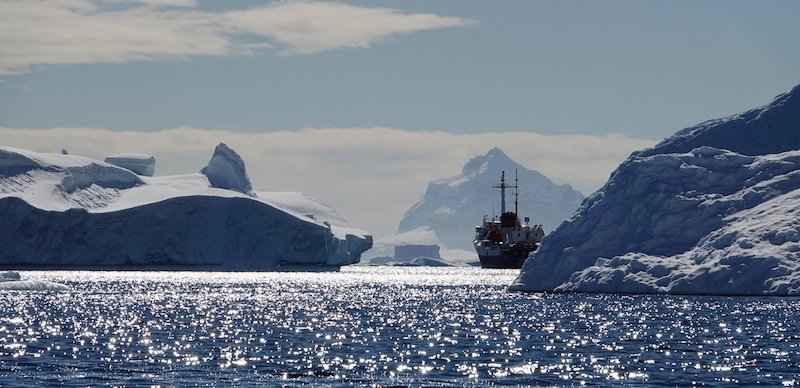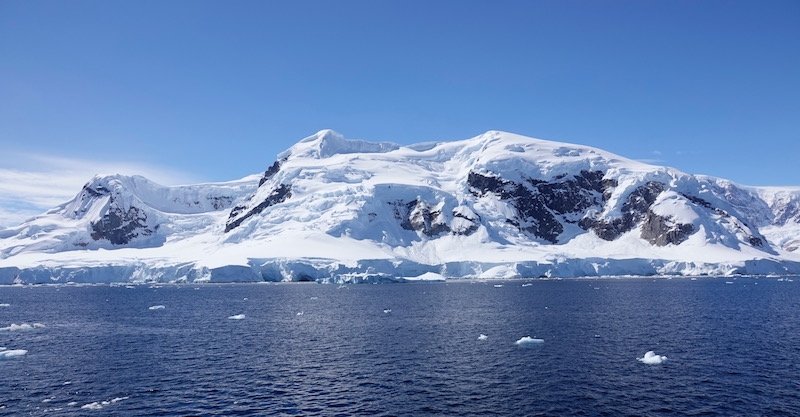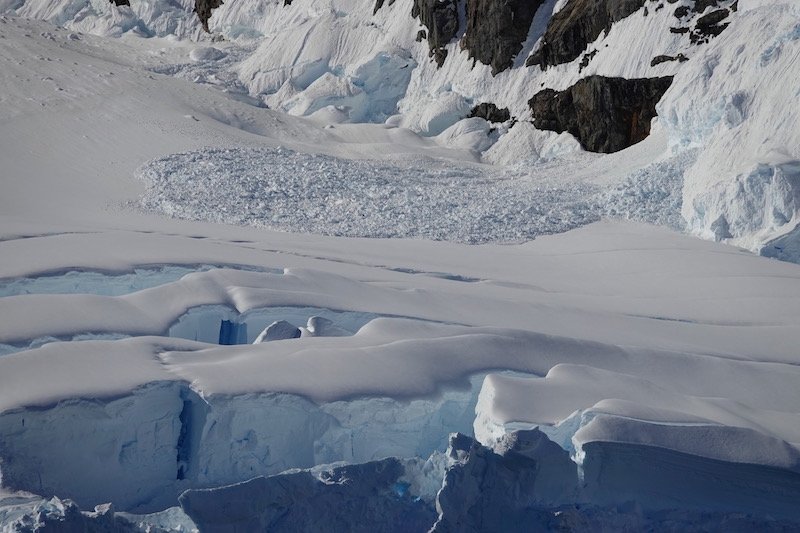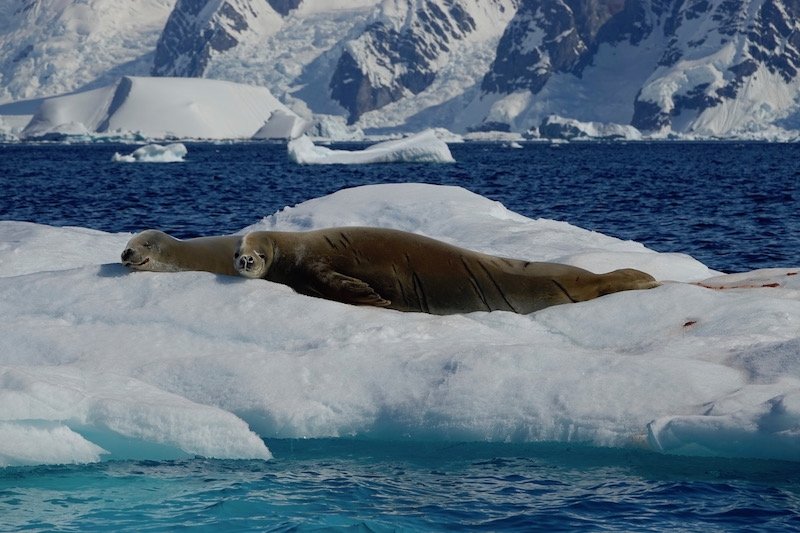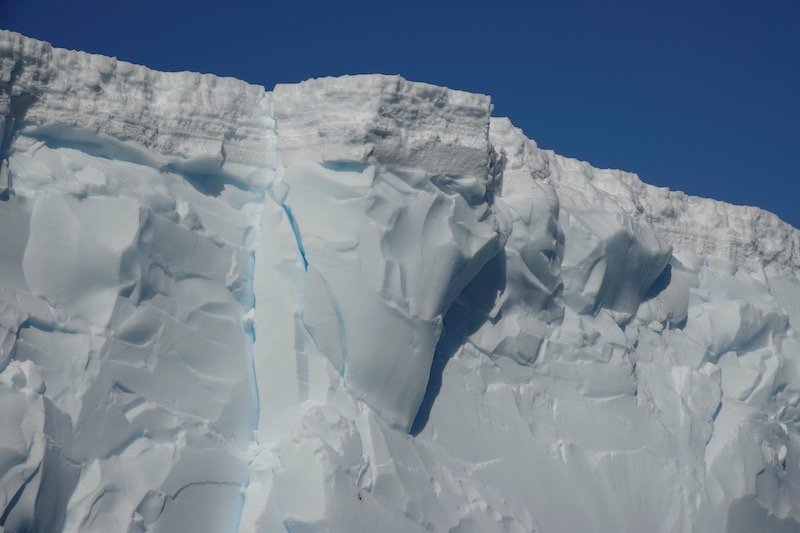Originally, we were supposed to go further south to Verdansky Station, Prospect Point and Petermann Island but once again the sea ice and the weather are against us and it turns out there will be no landings for several days. This can be hard for people to understand in today’s world where travel is seen as relatively straightforward and we can cross the globe in 24 hours by jet. We are used to getting to places on time and can get annoyed if we are delayed for a few hours or redirected.
In Antarctica travel is still very much determined by the elements. Sea ice is still a real danger to shipping, just as it was for early explorers and sealers and whalers. Most ships have ice strengthened hulls but they are still only able to break through relatively small depths of sea ice, and ice can still damage their hulls. Ships can still get stuck in ice, like Shackleton’s Endurance which got stuck, squeezed and eventually sank in 1915. Even today rescue operations are time consuming, expensive and can divert icebreakers from their primary tasks of resupplying stations or doing science. Plus no captain wants to get stuck and have to call mayday.
While we still can’t control the weather, the main advantage we have today is that modern communication and satellites mean that we know what the sea ice looks like before we get there. We also have much better ideas of the weather systems that are on the way. And the ship’s captain can communicate with other ships in the area to find out what conditions are like at sea level. This means that the captain and voyage leader are constantly planning ahead and revising and adapting our voyage plan to ensure we get the best experience and don’t get stuck. As an Antarctic scientist I am well aware of the work that goes in behind the scenes to get expeditioners to stations and back. Because our plans are changing we ask Monica to explain to everyone what has been happening behind the scenes and why we can’t go ashore for a few days. She also gives us a lecture on ice.
Instead of going to Verdansky, we moor up and have a zodiac cruise where we observe sleeping humpback whales, seals and penguins. There are some spectacular glaciers and we see an avalanche as a huge chunk of ice falls off the face of the cliffs. We can also see how fast some of these glaciers are retreating with climate change.
The next day the ship takes up to the edge of the ice (Flanders Bay) and we see the spectacular variations in sea ice forms including the thin films of grease ice and the wonderful fluffy disks which are called pancake ice. We also see some massive icebergs (kilometers long) that have calved off the retreating glaciers.
Just last week, a ship searching for the wreck of Endurancewas forced to abandon its search because of heavy sea ice. They also lost their autonomous underwater vehicle because of inclement weather and bad sea ice conditions.

